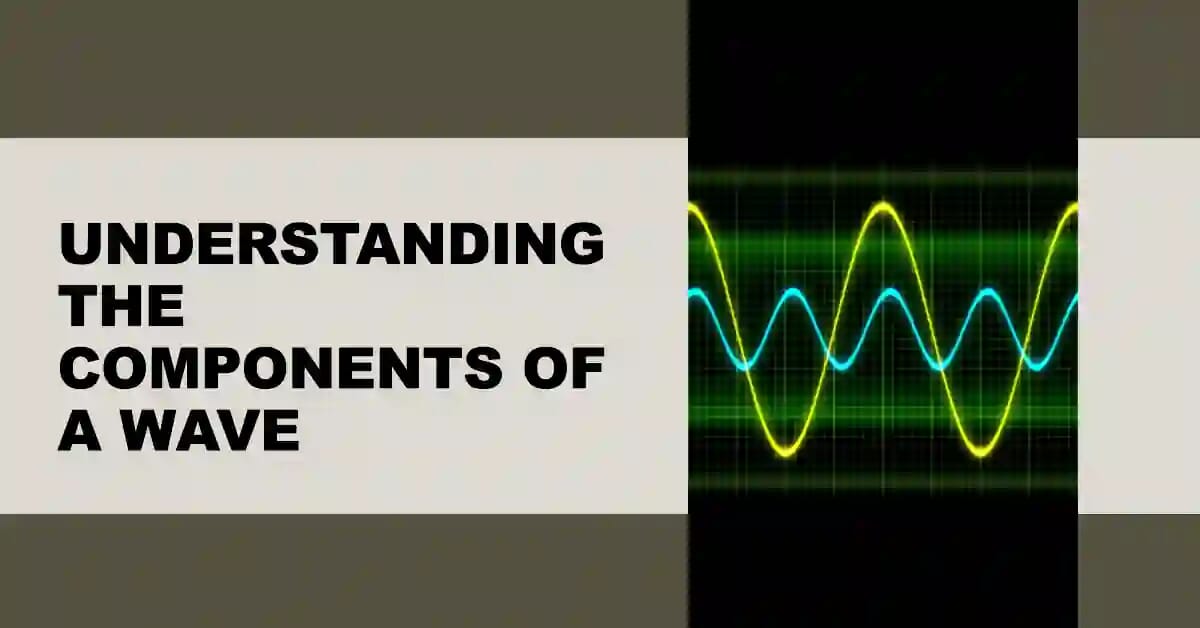Waves are fundamental phenomena in the realm of physics, exhibiting intricate patterns of energy propagation through various mediums. From the ripples on a pond to the vibrations of sound and light, waves are present in a multitude of natural phenomena. To comprehend the intricate nature of waves, it's essential to delve into their constituent parts, which collectively contribute to their behavior, characteristics, and classification.

1. Crest and Trough:
The crest of a wave is its highest point, representing the peak of the wave's amplitude, which is the maximum displacement of a particle from its equilibrium position. In contrast, the trough is the lowest point of the wave, indicating the point of the maximum negative displacement. Visualizing the crest and trough helps to define the amplitude of a wave, providing insight into its energy intensity.
2. Amplitude:
The amplitude of a wave refers to the maximum displacement of particles from their equilibrium position. It is essentially the height of the wave from the central line, or baseline, which represents the undisturbed state. In simpler terms, the amplitude reflects the intensity or strength of the wave. Larger amplitudes typically denote more energy, while smaller amplitudes indicate lower energy levels.
3. Wavelength:
Wavelength is the distance between two consecutive points in a wave that are in phase, typically measured from crest to crest or trough to trough. It is a critical parameter that defines the spatial extent of a wave. Longer wavelengths correspond to lower frequencies and vice versa. Wavelength is directly related to the energy and frequency of a wave.
4. Frequency:
Frequency is the number of complete oscillations a wave undergoes in a given time period. It is inversely proportional to the wavelength, meaning that longer wavelengths correspond to lower frequencies and shorter wavelengths correspond to higher frequencies. Frequency is a fundamental characteristic of waves and has a direct relationship with energy.
5. Period:
The period of a wave is the time it takes for one complete cycle to occur. It is inversely proportional to the frequency of the wave. A high-frequency wave has a shorter period, while a low-frequency wave has a longer period. The period is measured in seconds per cycle and is directly related to the wave's behavior and propagation speed.
6. Phase:
Phase refers to the relative position of a point in a wave cycle at a particular instant in time. It helps to describe the synchronization or misalignment of multiple waves. In-phase waves have the same phase, leading to constructive interference, while out-of-phase waves experience destructive interference. Phase plays a crucial role in wave interactions and phenomena like interference and diffraction.
7. Speed:
Wave speed is the rate at which a wave travels through a medium. It depends on the properties of the medium, such as its density and elasticity. The speed of a wave is the product of its frequency and wavelength. It's important to note that the speed of a wave does not depend on its amplitude, only its frequency and wavelength.
8. Propagation Direction:
The propagation direction of a wave refers to the path along which the wave energy travels. For example, in a water wave, the particles of water move up and down as the wave energy travels horizontally. The direction of energy propagation can be perpendicular or parallel to the wave motion, depending on the type of wave.
9. Equilibrium Position:
The equilibrium position is the point around which particles oscillate due to the wave's passage. It's the point where there is no net displacement of particles. In the absence of a wave, particles would remain at their equilibrium positions.
Understanding these integral components of a wave provides a foundation for comprehending various wave phenomena encountered in the realms of sound, light, water, and even quantum mechanics. Waves, with their unique characteristics and interactions, are central to the understanding of the natural world, making them a fascinating and essential topic within the field of physics.



